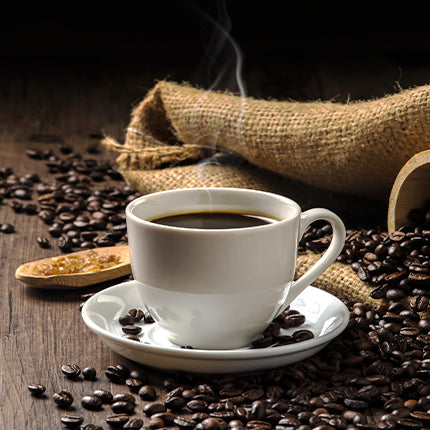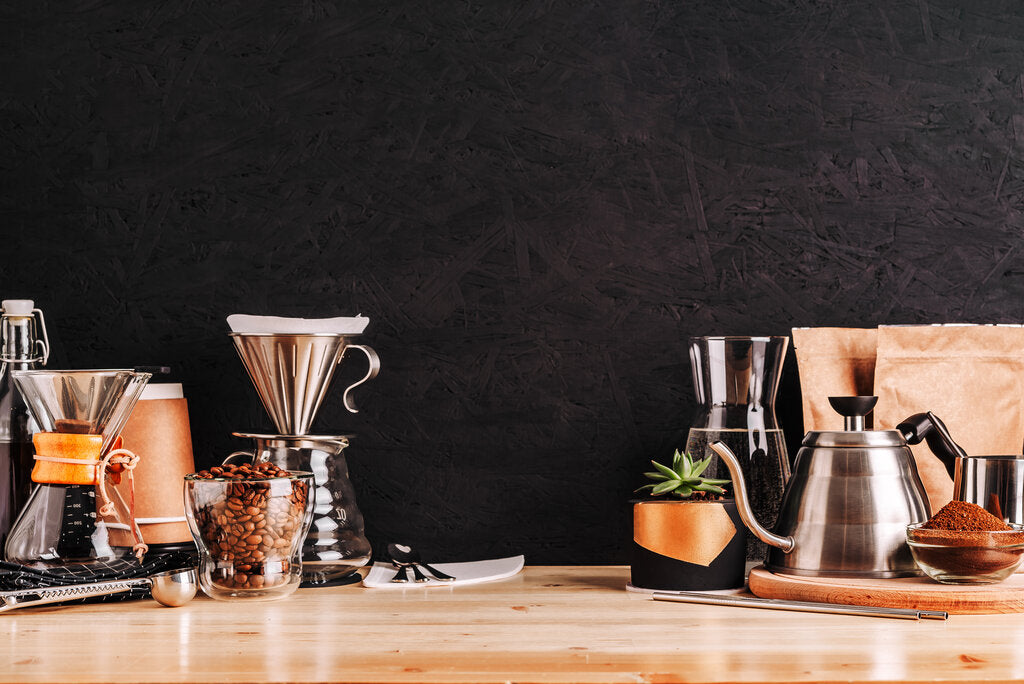Discovering the very best Coffee Brewing Methods for Perfect Flavor Each Time
The Scientific Research Behind Coffee Developing: How Temperature Level and Time Affect Your Drink
Comprehending the scientific research behind coffee developing reveals that temperature and time are not mere variables but pivotal components that determine the beverage's flavor account and total high quality. The optimal developing temperature normally falls in between 195 ° F and 205 ° F, while the period of removal varies considerably throughout different techniques. This interaction of factors can result in a cup that is either wonderful or unsatisfactory. As we check out the subtleties of these components, the inquiry arises: how can one successfully balance temperature level and time to achieve that best brew?
The Chemistry of Coffee Extraction
The chemistry of coffee removal delves right into the detailed processes that transform raw coffee beans into the aromatic drink taken pleasure in worldwide. This change mostly includes the solubility of various compounds existing in the beans, which are influenced by variables such as work size, water high quality, and the developing method employed.
Throughout the developing procedure, warm water works as a solvent, removing soluble compounds, including high levels of caffeine, acids, sugars, and lipids, from the coffee premises. Each substance contributes to the flavor profile, fragrance, and body of the last beverage. Acids are responsible for bright and tasty notes, while oils contribute to a rich mouthfeel.
The initial phases of brewing extract acids and sugars, leading to an enjoyable acidity, while long term removal can lead to bitterness due to over-extraction of undesirable compounds. Comprehending these chemical communications is essential for maximizing brewing methods, as the equilibrium between removal time and water temperature can dramatically affect the overall quality of the coffee.
Ideal Developing Temperatures
Locating the ideal developing temperature is crucial for opening the full capacity of coffee flavors and fragrances - coffee brewing methods. Study indicates that the optimal range for brewing coffee exists between 195 ° F to 205 ° F(90 ° C to 96 ° C) Within this array, the extraction procedure successfully dissolves the preferable soluble compounds in coffee beans, bring about a tasty and well balanced mug
Developing at lower temperature levels, such as below 195 ° F(90 ° C ), might cause under-extraction, generating an acidic and weak mixture with low-key flavors. Conversely, brewing at temperature levels exceeding 205 ° F(96 ° C) can bring about over-extraction, creating a severe and bitter taste due to the too much dissolution of unfavorable substances, such as tannins.
Additionally, the excellent developing temperature level can vary depending on the coffee bean type and roast level. For circumstances, lighter roasts frequently take advantage of slightly higher temperatures to boost their intricate taste accounts, while darker roasts might be much better fit to lower temperatures to minimize bitterness.
Eventually, keeping accuracy in developing temperatures is critical for achieving an unified equilibrium of tastes, guaranteeing that every mug of coffee provides a gratifying sensory experience.
Effect of Brewing Time
Brewing time plays a pivotal duty in identifying the flavor account and general quality of coffee. The removal process, which affects the preference, aroma, and body of the drink, is mainly based on how much time the coffee grounds touch with water. Shorter developing times can result in under-extraction, leading page to a weak or sour taste, as inadequate soluble substances are liquified. Alternatively, long term brewing can lead to over-extraction, where unwanted substances are released, leading to a bitter or astringent taste.
Optimum brewing time varies depending upon the technique made use of and the work size of the coffee. As an example, a French press typically requires regarding four minutes, while coffee extraction is normally completed within 25 to 30 secs. It is necessary to calibrate developing time in conjunction with other variables, such as water temperature level and coffee-to-water proportion, to achieve the desired flavor account.
Understanding the impact of developing time enables coffee enthusiasts to improve their brewing strategies, inevitably boosting the sensory experience of their mug (coffee brewing methods). With cautious focus to this variable, one can unlock the full potential of the coffee, revealing its one-of-a-kind qualities and nuances
Brewing Techniques and Their Impacts

For instance, methods like French press and cold brew enable a much longer steeping time, causing a fuller body and robust flavor due to increased removal of oils and soluble solids. On the other hand, coffee brewing makes use of high stress and a much shorter extraction time, creating a focused shot that stresses extreme tastes and a rich crema.
Pour-over techniques, such as Chemex or V60, supply an even more controlled removal procedure, allowing the brewer to manipulate flow rate and water distribution, which can enhance illumination and quality. Meanwhile, percolation methods cycle water via the coffee grounds multiple times, bring about a stronger, usually bitter find out here now taste.
Lastly, the usage of paper filters versus metal filters can likewise affect the last taste; paper filters usually yield a cleaner cup by trapping oils and great particles, while metal filters allow more oils to go through, contributing to a fuller mouthfeel - coffee brewing methods. Recognizing these nuances can elevate the coffee experience substantially
Tips for Improving Your Mixture
A well-executed brew can change also the easiest coffee into an amazing experience. Grind the beans just before making to maximize quality, making certain the work dimension matches your brewing method-- coarser for French press and finer for coffee.
Water top quality plays a crucial function; usage filteringed system water free from impurities. The excellent brewing temperature varies in between 195 ° F and 205 ° F(90 ° C to 96 ° C ) Also hot can burn the coffee, while too amazing might under-extract tastes.
Timing is just as vital. For immersion methods, steeping for three to five mins is ideal, whereas drip techniques commonly take about five mins. Trying out brew times to find your preferred toughness.

Conclusion
In recap, the detailed connection between temperature and time is extremely important in the coffee brewing procedure. Comprehending these scientific principles encourages people to fine-tune their developing strategies, ultimately leading to a more well balanced and satisfying coffee experience.
Recognizing the science behind coffee brewing reveals that temperature level and time are not mere variables yet crucial components that determine the beverage's taste profile and overall high quality. Understanding these chemical communications is vital for maximizing brewing strategies, as the balance in between extraction time and water temperature level can considerably influence the general high quality of the coffee.Brewing time plays an essential function in identifying the flavor account and total quality of coffee. By focusing on these components-- bean top quality, grind size, water temperature level, soaking time, and proportion-- you can elevate your coffee brewing procedure, resulting in a consistently superior mug.
In recap, the detailed connection between temperature level and time is critical in the coffee brewing procedure.